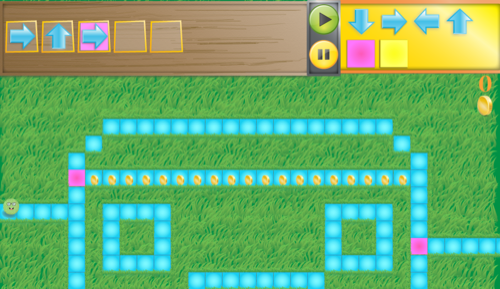
Preschool and kindergarten are recommended times for kids to learn a new language, while they’re still in the process of learning their first one. So Grechen Huebner and her cofounder, Jon Mattingly, created an app that teaches kids to program – before they’ve even learned how to read.
The idea behind the iPad app, Kodable, is just that simple: create an app to make programming a child’s second language as early as possible in the child’s life. Kodable is designed for children between the ages of five and seven, but Huebner said it’s been tested and enjoyed by kids as young as three.
“One of my favorite moments was when this three-year-old boy was playing it and literally screaming, he was so excited,” she said. “He already got the concept. He just needed a parent to help him drag and drop.
“I had gone to a baby shower where the mother got this software called ‘Your Baby Can Read,’ so it started as a joke – oh, what if we created, ‘Your Baby Can Code’? Then we started researching and figuring out that the best time for kids to learn is when they’re really young and still developing their cognitive abilities,” Huebner added.
Kodable has no written instructions. As soon as kids learn to drag and drop on an iPad, around age four or five, they’re ready to play. Huebner believes that they can still enjoy the app before that, with the assistance of a parent. With a series of directional arrow commands, kids lead cute, pastel balls of fuzz through Kodable’s 90 levels. The first 30 levels are free; each additional set of 30 levels are a $1.99 add-on.
Each level, designed by Huebner and programmed by Mattingly, aims to teach kids something about thinking like a programmer to solve problems. As they navigate through the levels, children utilize functions, conditional statements, if/then statements and loops.
Huebner and Mattingly launched Kodable in June 2012, having just graduated from the University of Louisville. They created 10 initial levels, which they tested with children from ages 3 to 9 and discussed with early childhood educators. Their current project is working with educators to create a curriculum that works alongside Kodable, so parents can teach their kids programming in a more structured way.
Teaching kids to program is a huge trend today, but it’ll be at least 15 years before Kodable’s five-year-old audience enters the workforce. Who’s to say that by the time these kids grow up, programming jobs will still hold the status they do now?
“Jobs in software development are increasing at a rate that’s double that of any other industry. There will be jobs. And whether or not kids choose to become programmers when they grow up, understanding technology is still a very important skill,” said Huebner. “Technology is a huge part of our lives and it’s only going to become more a part of our lives. It’s not ever going to go away.”

















